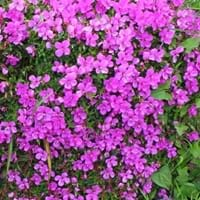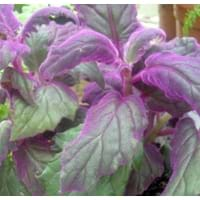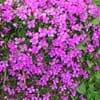Life Span
Perennial
Annual, biennial or perennial
Type
Tender Perennial
Tender Perennial
Origin
Mexico, Central America
Melanesia
Types
Not Available
Herbaceous perennial
Habitat
agricultural areas, Loamy soils, Warmer regions
Sunny Edge
USDA Hardiness Zone
10-15
10-12
Sunset Zone
H1, H2, 22, 23, 24
H1, H2
Habit
Spreading
Prostrate/Trailing
Flower Color
Fuchsia
White, Orange, Orange Red
Flower Color Modifier
Bicolor
Bicolor
Fruit Color
Not Available
Brown
Leaf Color in Spring
Dark Green
Green, Purple, Dark Green
Leaf Color in Summer
Dark Green
Green, Purple, Dark Green
Leaf Color in Fall
Dark Green
Green, Purple, Dark Green
Leaf Color in Winter
Light Green
Light Green
Leaf Shape
Oval Cordate
Elliptic
Plant Season
Spring, Summer, Fall, Winter
Spring, Summer, Fall, Winter
Sunlight
Partial shade
Partial Sun, Partial shade
The pH of Soil
Acidic, Neutral
Neutral
Soil Drainage
Well drained
Well drained
Bloom Time
Indeterminate
Spring, Late Spring, Early Summer, Summer
Tolerances
Dry Conditions, Soil Compaction, Sun
Drought
Where to Plant?
Container, Ground
Ground, Pot
How to Plant?
Seedlings, Stem Cutting
Stem Cutting
Plant Maintenance
Medium
Medium
Watering Requirements
Do not let dry out between waterings, Do not water the foliage
Medium
In Summer
Lots of watering
Lots of watering
In Spring
Moderate
Moderate
In Winter
Average Water
Average Water
Soil pH
Acidic, Neutral
Neutral
Soil Drainage Capacity
Well drained
Well drained
Sun Exposure
Partial shade
Partial Sun, Partial shade
Pruning
A hard prune may be necessary if the plant becomes woody, Cut upper 1/3 section when young to enhancegrowth
Remove damaged leaves, Remove dead branches, Remove dead leaves
Fertilizers
Fertilize every three months
All-Purpose Liquid Fertilizer
Pests and Diseases
Bacteria, Birds, Fungal Diseases, Red blotch
Red blotch
Plant Tolerance
Dry Conditions, Full Sun, Salt and Soil Compaction
Drought
Flowers
Showy
Insignificant
Flower Petal Number
Single
Single
Foliage Texture
Fine
Medium
Foliage Sheen
Glossy
Matte
Attracts
Beetles, Bugs, Insects
Not Available
Allergy
Acidic, allergic conjunctivitis
Not Available
Aesthetic Uses
Beautification, Hanging Basket, Landscape Designing
Hanging Basket
Beauty Benefits
Makes Hair Silkier, Making cosmetics
Not Available
Environmental Uses
Forms dense stands, Provides ground cover, soil stabilisation
Air purification
Medicinal Uses
Not Available
Not Available
Part of Plant Used
Leaves, Stem
Leaves
Other Uses
Air freshner, Cosmetics, Showy Purposes
Used as Ornamental plant
Used As Indoor Plant
Sometimes
Yes
Used As Outdoor Plant
Yes
Yes
Garden Design
Bedding Plant, Container, Groundcover, Hanging Basket, Mixed Border, Tropical
Container, Hanging Basket, Houseplant, Mixed Border, Tropical
Botanical Name
HETEROCENTRON elegans
GYNURA aurantiaca
Common Name
Spanish Shawl
Purple Velvet Plant
In Hindi
Heterocentron
gynura aurantiaca
In German
Heterocentron
aurantiaca Gynura
In French
Heterocentron
aurantiaca Gynura
In Spanish
Heterocentron
aurantiaca gynura
In Greek
Heterocentron
Gynura aurantiaca
In Portuguese
Heterocentron
Gynura aurantiaca
In Polish
Heterocentron
Gynura aurantiaca
In Latin
Heterocentron
Gynura aurantiaca
Phylum
Magnoliophyta
Magnoliophyta
Class
Magnoliopsida
Magnoliopsida
Family
Melastomataceae
Asteraceae
Genus
Heterocentron
Gynura
Clade
Angiosperms, Monocots
Angiosperms, Asterids, Eudicots
Subfamily
Not Available
Not Available
Number of Species
Not Available
Not Available
Properties of Spanish Shawl and Purple Velvet Plant
Wondering what are the properties of Spanish Shawl and Purple Velvet Plant? We provide you with everything About Spanish Shawl and Purple Velvet Plant. Spanish Shawl doesn't have thorns and Purple Velvet Plant doesn't have thorns. Also Spanish Shawl does not have fragrant flowers. Spanish Shawl has allergic reactions like Acidic and allergic conjunctivitis and Purple Velvet Plant has allergic reactions like Acidic and allergic conjunctivitis. Compare all the properties and characteristics of these two plants. Find out which of these plant can be used as indoor plant. If you are interested to decorate your house and garden, find out aesthetic uses, compare them and select the plant which will beautify your surrounding. Along with beautification, try comparing medicinal and edible uses of Spanish Shawl and Purple Velvet Plant and you can choose the plant having best and most benefits.
Season and Care of Spanish Shawl and Purple Velvet Plant
Season and care of Spanish Shawl and Purple Velvet Plant is important to know. While considering everything about Spanish Shawl and Purple Velvet Plant Care, growing season is an essential factor. Spanish Shawl season is Spring, Summer, Fall and Winter and Purple Velvet Plant season is Spring, Summer, Fall and Winter. The type of soil for Spanish Shawl is Loam and for Purple Velvet Plant is Loam while the PH of soil for Spanish Shawl is Acidic, Neutral and for Purple Velvet Plant is Neutral.
Spanish Shawl and Purple Velvet Plant Physical Information
Spanish Shawl and Purple Velvet Plant physical information is very important for comparison. Spanish Shawl height is 30.00 cm and width 60.00 cm whereas Purple Velvet Plant height is 30.00 cm and width 90.00 cm. The color specification of Spanish Shawl and Purple Velvet Plant are as follows:
Spanish Shawl flower color: Fuchsia
Spanish Shawl leaf color: Dark Green
Purple Velvet Plant flower color: White, Orange and Orange Red
- Purple Velvet Plant leaf color: Green, Purple and Dark Green
Care of Spanish Shawl and Purple Velvet Plant
Care of Spanish Shawl and Purple Velvet Plant include pruning, fertilizers, watering etc. Spanish Shawl pruning is done A hard prune may be necessary if the plant becomes woody and Cut upper 1/3 section when young to enhancegrowth and Purple Velvet Plant pruning is done Remove damaged leaves, Remove dead branches and Remove dead leaves. In summer Spanish Shawl needs Lots of watering and in winter, it needs Average Water. Whereas, in summer Purple Velvet Plant needs Lots of watering and in winter, it needs Average Water.





